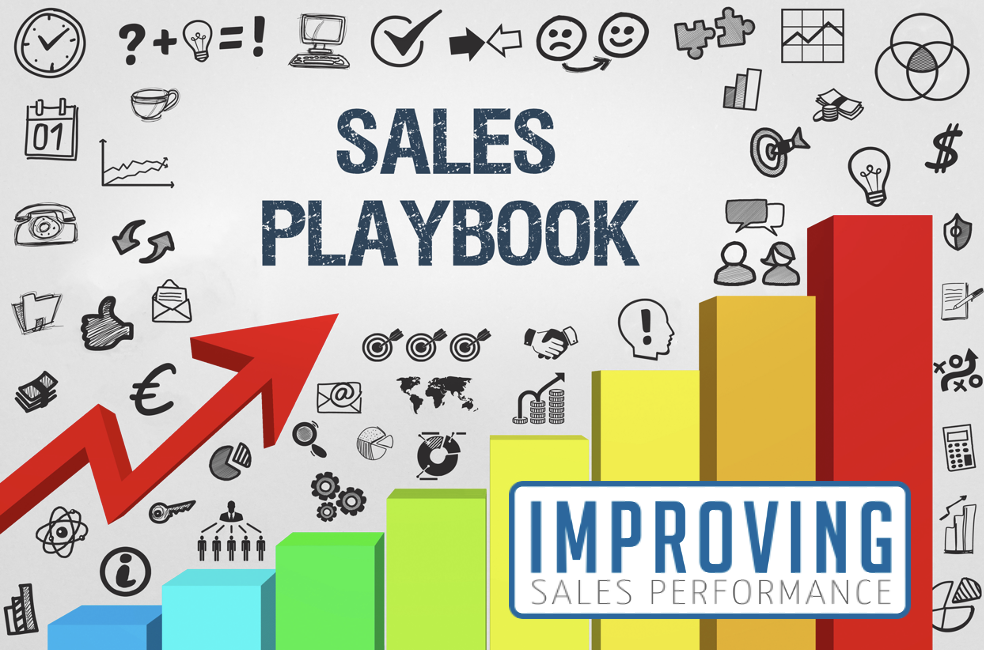|
In years past, it was mostly up to salespeople to ask probing questions of their leads, uncover their true needs and wants, and then educate them on what the company offered. Of course, the advent of the Internet changed the status quo dramatically, especially when it comes to nurturing leads. Most of today's leads have already done their homework, and are coming to marketers and sales reps with highly educated and detailed questions. Many of them are ready to evaluate, compare, and buy.
What does it take to get prospects to that point? A well-designed, streamlined digital marketing strategy is the key. You want to create a series of touchpoints for your customers — that is, milestones that will guide them from one stage of the sales funnel to the next, and ultimately toward a purchase. The better your touchpoints reflect your ideal buyer's journey (as well as variable paths to arrive at the bottom of the funnel), the more likely you'll be to convert them into loyal customers. To optimize your digital marketing strategy, there are at least four key steps you'll need to implement: Step 1: Prioritize Digital Marketing Channels and Content Let's assume you already have a solid marketing strategy, excellent content, and professional branding elements in place. How can you utilize these assets for the best results? The first step is to clearly understand the content channel and content type preferences of your target audience. For instance: Where do your prospects go to get content? Which platforms do they frequently use? What type of content do they prefer? Are they more interested in long-form articles or short videos? It's important to "step into your customer's shoes" by considering how they use the Internet to research your products and services. A lot of marketing departments fall into the trap of thinking: "This content channel is amazing! Surely everyone will love it as much as we do!" Remember, it's not your goal to deliver what you like to customers; you need to deliver what they like. Spend some time asking customers where they like to spend time online. You may be surprised by the answers you receive. In addition, think about the purpose of each platform. Some platforms lend themselves to video content, while others are more suitable for the written word. Still others are best suited to still images and photographs. Here again, it's imperative that you understand the reason your prospects would use the platform in the first place. For instance, a manufacturing company may have consumers searching YouTube for product demonstrations and how-to videos, while prospects researching interior decorators may frequent Instagram and Pinterest. The point is, you want to align your content channel with your audience. That's how you'll get higher-quality leads — leads that will move through your funnel more quickly and efficiently. Just as a fisherman has to first go to where the fish are and then attract them with the right bait, you must first place your content where your prospects congregate, and then attract them with your exceptional content. Common Content Channels and Types What are some examples of content channels people use in their online research? While the following list is by no means exhaustive, it can give you a good idea of the many options out there:
Granted, it's highly unlikely you'll be able to cover every channel and content type in your marketing strategy. However, if you start with the top 3-5 channels and types your prospects use, you'll almost certainly get a jump start on building effective touchpoints within your overall sales funnel. Step 2: Detail Your Digital Lead Nurturing Process Once you've selected your channels and content types, the next step is to determine the paths prospects take within and through each of these areas. (Think of this as developing touchpoints within touchpoints.) The objective is to make prospect interactions with your brand as smooth and streamlined as possible — and as effective as possible in moving them to the next stage of the sales funnel. You should start by listing the touchpoints of your process in order of importance. The following list is an example of what this may look like, with the most valuable bottom-of-funnel touchpoints occurring lower on the list:
Each of the touchpoints above should trigger specific next steps — which means you'll need to include clear CTAs that will encourage prospects to take those next steps in the process. Of course, it's important to be flexible as well, since prospects will sometimes not move through the sales funnel in a predictable, linear fashion. Step 3: Set Conversion Points and Funnel Touchpoints Conversion points are when prospects go from being anonymous to actively connecting with your company (i.e., sharing their contact info with you). Some examples of conversion points include:
As you fine-tune your lead nurturing process, you want to make sure you provide plenty of CTAs around your conversion points. Simple phrases like "get a free trial" or "speak to an expert" typically work best. Remember, this is the main objective of your digital marketing efforts: to get prospects to directly reach out to and engage with your sales team. Step 4: Establish Data and Analytics Tracking Finally, you want to monitor key performance indicators like landing page visits, email sign-ups, and webinar attendance. These metrics will tell you how effective your strategy is at present; and they will help you make informed decisions about how to refine your conversion points, adjust your content channels, and enhance your content delivery. At the end of the day, your digital marketing strategy should guide prospects through the sales funnel and to a purchase, or a conversation with one of your sales reps. If you optimize your digital marketing strategy using the 4 steps discussed above, you'll see improved sales performance from your team in no time. Learn More A healthy relationship between sales and marketing is vital to an organization’s success. Dive deep into this effective strategy in a new book called Sales & Marketing Alignment. If you'd like more insights on how you can improve your sales leadership, contact us. Or sign up for our newsletter for more valuable resources. If you want your sales strategy to succeed, you have to put serious forethought into it. The haphazard approach — in which reps are told to sit down in front of the phone and start selling to someone — rarely works in the sales industry. Instead, integration between your sales and marketing teams is key to repeated (and repeatable) wins.
Everyone needs to know how different customers may enter their sales funnel, what they may be looking for at each stage, and how marketing and sales can work together to guide them through the funnel and toward an eventual purchase. This overall knowledge is the basis of intentional sales strategy; in turn, the specific actions and tools your salespeople use to guide leads on their journey are your sales tactics. Factors of Effective Sales Strategy Design It's vital that you understand the key factors influencing whether your sales strategy is successful or not. Three of the biggest factors to keep in mind are: 1. Lead Sources Where are your leads coming from, and what's the nature and extent of their interest? A lead that downloads an e-book from your website may have a different level of interest compared to one who attends an hour-long webinar. Or maybe not! Either way, your sales and marketing teams need to understand that the origin of each lead will help them understand how to nurture that lead effectively. 2. Lead Categorization Leads can typically be separated into 3 common categories:
Lead categorization provides sales and marketing with additional valuable insights into how to best guide leads into and through the sales funnel. 3. Lead History Knowing how long most leads are generally in your sales funnel before they make a purchase, coupled with knowing each lead's history of interaction with your company, can help you develop highly impactful sales strategies and tactics. For instance, an automated email sequence with a CTA to book an appointment may work for one type of lead, whereas a personalized email from a sales rep may be more effective with another. The important thing is that your sales and marketing teams are in complete alignment on these 3 factors, and understand how leads will be sorted, categorized, and nurtured throughout their time in your funnel. Building a Sales and Marketing Toolbox, and Training Your Team Just like you need different equipment to go snow skiing vs. water skiing, you need different strategies and tactics (or at least tweaks to your current strategies and tactics) for each campaign your company decides to tackle. For instance, you may need different talking points for a special campaign compared to your normal marketing message. Of course, you'll also need to ensure that sales and marketing are working together with operations and IT, as needed, to develop the resources your campaign needs. You can think of all of these collected resources as your sales and marketing "toolbox" — an organizing principle that allows for easy maintenance, updating, and training for your team. Building this toolbox, and then training sales reps to use the tools within it effectively, will increase your team's confidence and improve ROI on lead capture efforts. Make sure as you build the toolbox that you document best practices. Keep monitoring your toolbox's effectiveness, and be willing to adapt as needed. And then... document those adaptations! As you grow in your understanding of every step of the campaign's sales process, you'll create a huge competitive advantage for your company. You'll also create shorter sales cycles, improved sales performance, and higher close rates. Using and Sharing Data To Increase Close Rates In general, sales and marketing teams have access to different types of data. However, both teams need quantitative and qualitative data to function effectively; and when they pool their knowledge, it can make everything that much better. Sharing and comparing data drives alignment and success. When you think of quantitative data, you may think about metrics like lead populations, click-through rates, conversion rates, email open rates, average sales cycle timing, and so forth. All of these are valuable pieces of information that, when used properly, can help your sales and marketing teams pinpoint opportunities for improvement and growth. In addition, qualitative data like lead quality, interest levels, observed trends, or even "gut feelings" also play a key role in shaping your overall process. When your teams review both types of data together on a regular basis, they are empowered to act in a collaborative, integrated way. Far from a siloed mentality, they are able to ideate and implement specific, tangible improvements to your company's current sales and marketing framework. This type of collaborative approach taps into what's really the most important part of sales: not a single strategy, tactic, or process, but the culture created among your sales and marketing teams. When your culture is focused, aligned, and dynamic, it can provide game-changing feedback to your organization. Designing Purposeful Sales Strategies and Tactics When you develop strategies and tactics that align with each type of lead, you can unlock tremendous untapped value. When your sales team shares its vision and insights with your marketing team, and vice versa, it creates the basis for a sustainable, ever-improving process of lead capture, nurture, and conversion. Integration of your sales and marketing teams is the heart and soul of a winning strategy. Granted, developing a collaborative culture and then using it as the leading edge of a sharp, focused sales and marketing initiative is easier said than done. However, once you've laid the groundwork, the maintenance is much easier. And as you continue growing in knowledge of your target leads, and your sales and marketing teams become more comfortable with one another, you're putting yourself in a prime position to win the day, every day for the foreseeable future. Learn More A healthy relationship between sales and marketing is vital to an organization’s success. Dive deep into this effective strategy in a new book called Sales & Marketing Alignment. If you'd like more insights on how you can improve your sales leadership, contact us. Or sign up for our newsletter for more valuable resources. When some marketing professionals hear the term "sales funnel," it can be a bit of a turn-off. They may think that the company's sales funnel has nothing to do with them; that they're busy managing the brand, while sales reps are doing the unrelated work of closing deals.
The reality is that the sales funnel really encompasses all aspects of a business — especially the sales and marketing teams. Marketing tasks shouldn't just float on the surface of that funnel, inviting leads to come in. Rather, impactful marketing should work with sales to create concrete projections and deliver tangible results. Of course, sales should also collaborate with marketing to provide the information they need to craft the company's messaging. Simply put, sharing truly is caring when it comes to sales and marketing alignment. When both teams buy into a unified approach, then the entire brand will flourish. The key is for each team to have a broader mindset than what would usually be expected. How Marketing Can Operate With a Sales-Oriented Mindset Marketing pros need to be focused on traditional measures of marketing success: numbers, analytics, branding, content engagement, etc. However, the best marketers are also customer advocates. They can put themselves in the shoes of the consumer, and understand their interests, goals, and pain points. This is where your sales team comes into the picture. Sales reps have a direct line of communication with end users and thus possess a uniquely valuable perspective on what truly resonates with customers. When your sales team keeps marketing informed about which messages are most effective for closing deals — and when marketing is open to those insights — then your company's top-of-funnel strategy will become ever stronger, and conversion rates will increase throughout the sales funnel. Avoiding Waste with Sales-Centric Marketing Another key benefit of approaching marketing with a sales-centered mindset is the avoidance of unnecessary waste — in particular, financial waste that affects the company's bottom line. Marketers who approach the top of the funnel with a purely quantity-based mindset may succeed in attracting a lot of leads, but they often don't consider how likely or unlikely those leads are to make a purchase. In contrast, a sales-centric approach can inform top-of-funnel marketing activities, so that even if the number of leads coming into the sales pipeline is slightly reduced, their quality is increased. This will result in a tighter, more focused approach from your sales team — and less wasted effort chasing low-value leads. (At the same time, using even basic targeting tools will help your marketing team focus on high-value marketing leads, which will also help the sales team in the end.) Valuing Your Sales Team's Time and Skills Some marketing teams fall into the trap of approaching the sales funnel with an "if we build it, they will come" mentality. In other words, they believe that if the product is awesome enough, and the company's marketing infrastructure is powerful enough (e.g., a great website, a strong social media presence), customers will buy based on those merits alone — salespeople not required. The reality is, many customers won't even consider buying from a brand unless they're first encouraged to do so by a skilled sales rep. Your company's sales team is full of individuals with a unique talent, and the ability to effectively nurture leads into paying customers. When your marketing team has genuine respect for your sales team (and vice versa), each team will be more willing to set the other up for success. How Sales Can Operate With a Marketing-Oriented Mindset We've talked about how marketing can be more effective when they think in terms of sales — but does it also work the other way around? Will your sales team perform better if they introduce a "marketing mindset" into their process? The simple answer is: Absolutely! When your sales team has a firm grasp of the work marketing does, and how it relates to their success, then they'll be able to put themselves in the best possible position to close deals. Understanding the Nature of Online Research Your sales team needs to understand which type of lead they may encounter in any given transaction. The key here is becoming familiar with your company's marketing materials — on your website, on social media, and so forth. Sometimes a lead will show up ready to buy because of what they've already found within your marketing content; other times, leads are still making their decision, and need clarification on something they've read or seen. When your sales team can anticipate different scenarios based on the various customer journeys that marketing facilitates, they'll be able to fill the gaps in customer needs and close the sale. Considering How Leads Want To Be Contacted Another way that a marketing-oriented mindset can help your sales reps is the matter of contact methods. Some customers like to be contacted via email; others prefer a phone call; still others prefer texting. Those preferences can be recorded and cataloged by marketing software that lets customers decide how they want to be contacted... and wise sales reps will take those preferences into account when reaching out to leads. Valuing Customer-Focused Content While marketing team members must understand the value of touting benefits over features, salespeople must also be aware of and subscribe to this focus. The average customer doesn't care about all the features built into your product; rather, they want to know how your product will benefit them in tangible ways. It can be easy for your sales reps to fall into a pattern of explaining features during customer interactions when they should take a marketing approach and focus on benefits. Make sure they're asking leads the right questions, and then describing how your product can address concerns, solve problems, and fill needs. (Getting quantitative data on which web pages and lead magnets get the highest traffic volume can be a good starting point.) At the end of the day, when your marketing and sales teams are willing to share, and even think like each other to some extent, they'll end up winning together — and your entire organization will benefit. Learn More A healthy relationship between sales and marketing is vital to an organization’s success. Dive deep into this effective strategy in a new book called Sales & Marketing Alignment. If you'd like more insights on how you can improve your sales leadership, contact us. Or sign up for our newsletter for more valuable resources. The top of the sales funnel offers a clear objective for marketers: make prospects aware of the brand, and convince them they should learn more about it. The bottom of the funnel is equally clear-cut: close the deal with an interested lead.
But what about the middle of the funnel (MOFU)? For many sales and marketing teams, the middle-of-the-funnel stage is a nebulous "gray area" where the division of responsibilities between the two departments becomes murky. As a result, leads get stuck in no-man's-land. In fact, of all three of the core stages in the sales funnel, the middle may be the most challenging to navigate. The good news is, with some careful planning and good communication, the middle of the funnel can be a powerful driver of sales, instead of a frustrating bottleneck. And at the end of the day, a lot of MOFU success comes down to effective collaboration. Key Collaboration Items For Middle-of-Funnel Content Let's talk about some key MOFU items your sales and marketing teams should collaborate on — items that can move the needle on your metrics in the bottom part of the funnel. These include:
The bottom line is, marketers are responsible for creating great content and automation, and salespeople can provide insights as to how leads decide whether to buy. Sales and marketing should have a "symbiotic relationship" when it comes to the middle of the funnel stage. When marketers focus on their role of communicating benefits to leads — from the first moment they make contact via a social post, ad, or landing page — and sales reps focus on closing deals with messaging aligned to marketing materials, the overall result will be more leads in the pipeline and more sales being made. All Leads Are Not Created Equal It's also important to keep in mind that not all leads are created equal when it comes to the middle of the funnel. It's important for your sales and marketing teams to be in alignment about what constitutes a valuable lead, and how sales should approach different touch points with leads. What motivates one client to buy from your brand may be totally different from what motivates another. For example, one lead may be in the early stages of researching solutions to a problem. They may interact with your middle-of-funnel content, but not be anywhere close to actually purchasing from your brand. On the other hand, a second lead may have already researched solutions for some time and is re-engaging with your content with the intent of eventually making a purchase. Obviously, the second type of lead will be more immediately valuable to your company. With that in mind, it's important that your sales and marketing teams work together to identify which leads are higher-value, and how to most effectively approach them after an interaction. At the same time, they should develop strategies to nurture marketing-qualified leads, and eventually nudge them into becoming sales-qualified. Designing diverse MOFU content is often the best way to cover all your bases. You want content that will convince eager leads to take the next step (maybe data-driven content like white papers and e-books), as well as easily digestible content to keep your brand top of mind for leads who are still on the fence (infographics, blog posts, and so forth). It's Not Just About Numbers, It's About Purpose Having well-defined lead segments and value scores will help make the entire lead generation process more purposeful during the middle-of-funnel stage. Having a large volume of leads is great... unless most of those leads are unlikely to become paying customers. It's much better to have 50 leads in your pipeline that are likely to buy vs. having 500 leads who will almost certainly not do business with you. The middle of the funnel is where you can start weeding out leads with low value and focus on the leads that are most likely to go somewhere. CTAs in your content can become great "lead filters." For instance, a financial services company may publish a blog post with a CTA to sign up for their free newsletter. When leads do so, they may be classified as sales-qualified leads, which will trigger outreach from one of your sales reps. It's true that the middle of the sales funnel can pose some challenges in terms of which department should take action, and which actions they should take. But with a purposeful, deliberate approach, and a lot of good collaboration, you can create a framework for success in terms of your content and customer interactions. And when it's all said and done, you'll be in prime position to enjoy the benefits of improved sales performance. Learn More A healthy relationship between sales and marketing is vital to an organization’s success. Dive deep into this effective strategy in a new book called Sales & Marketing Alignment. If you'd like more insights on how you can improve your sales leadership, contact us. Or sign up for our newsletter for more valuable resources. The sales and marketing world revolves around analyzing numbers and hitting targets. So it's no wonder that one of the most common complaints you'll hear is they need more leads to meet quota.
However, is it really that simple? The fact is, more leads may not always equal more conversions. It's vital that your sales and marketing teams work together to develop an intentional, comprehensive plan for developing quality content and delivering appropriate follow-up for leads. Let's talk about both sides of the "lead issues" coin — namely, too few leads and too many leads — and see how quality content can solve many of the problems your teams may be facing. Too Few Leads = Lack of Relevant Content It's easy to think of scenarios in which a lack of relevant content results in a need for more leads for the sales team. Take digital content as an example. Far too often, the marketing team creates websites and other digital content with zero input from the sales team. When you think about it, that's an incredible missed opportunity! Sales reps often have valuable insights into how customers interact with marketing materials. They know their specific goals and interests. And they understand common objections that may arise from the outset of their time in the funnel. Why wouldn't marketing want to tap into that kind of resource? When sales and marketing work together to create top-of-the-funnel content, it almost inevitably leads to more leads. Here are just a few of the ways sales and marketing teams can create synergy in terms of content creation:
Bring Sales and Marketing Together Granted, mileage may vary on these tactics, depending on the nature of your business and consumer base. But the point is, whatever content marketing strategies you implement will be improved (perhaps dramatically) by bringing your sales and marketing teams together. It's vital that there is a consistent process of collaboration in place. There must be a clear consensus about the nature of your buyers' journeys. And that content is intentionally mapped to meet the needs of your buyers each step of the way. The result of all this planning and collaboration will be a solid content strategy that brings, not only more leads, but better-qualified leads into your sales funnel. Too Many Leads = Lack of Targeted Content At first glance, it may seem obvious that the more leads a sales team has in its pipeline, the greater its chances of converting those leads into paying customers. The problem is, it may not be that simple, especially if the company's lead generation strategy has replaced quality with quantity. Actually, investing in quantity over quality can result in a lot of wasted time and effort. In many cases, brands face this issue because their content, though relevant to consumer needs and desires, is not targeted enough to weed out the non-qualified leads from the qualified ones. For example, imagine a company that offers chartered flights starting at $5,000. There is a market for this type of offering, whether in the corporate world, the sports world, or some other sector. But what if the price is never mentioned in TOFU or even MOFU content? The company may generate a lot of interest from small business owners, for instance — but how many of them would be willing to pay a minimum of $5,000 per flight? It's easy to see how more leads in this case may not translate to a better lead generation strategy. In fact, the company could end up wasting thousands of dollars on ads that only bring non-qualified leads into the funnel. Again, Bring Sales and Marketing Together Here again, cooperation between your sales and marketing teams can help prevent (or at least mitigate) this problem. Your two departments can work together to make sure the right leads are targeted. For example:
At the end of the day, creating quality content through consistent collaboration will help you generate enough leads to keep your sales pipeline full, but not so many that you end up wasting time on non-qualified ones. Your teams will become more productive and efficient, and your sales performance as a whole will improve. Learn More A healthy relationship between sales and marketing is vital to an organization’s success. Dive deep into this effective strategy in a new book called Sales & Marketing Alignment. If you'd like more insights on how you can improve your sales leadership, contact us. Or sign up for our newsletter for more valuable resources. Moving customers through each stage of the sales funnel is an important function of your sales and marketing teams. Of course, they need to be in alignment with each other if this process is going to be as smooth and seamless as possible. They also need to deploy the right activities at the right time for best results.
What are some of the activities your team should be doing at each stage of the sales funnel? Let's discuss five for each phase: top (awareness), middle (evaluation), and bottom (decision). Top of Funnel Activities 1. Newsletters These are a great way to provide information that leads need to know about their situation. Highlight the benefits that your product or service offers, and how you can make their lives better, or solve a particular problem. 2. Social media posts Social media is an excellent channel for connecting with prospects and increasing brand awareness. Make sure your team is providing a steady stream of relevant content for users who may be unfamiliar with your company. 3. Marketing email sequences Automated email sequencing is a great "set it and forget it" technique that can help move leads from the top of the funnel to the middle stage. Use those templates to provide educational content, and capture data points that measure each lead's level of interest. 4. Invitations Invite top-of-funnel leads to events where they can learn more about your company and your offerings. These events could include on-demand videos, webinars, panel discussions, product demonstrations, and workshops, to name just a few. 5. Thought leadership Building trust is crucial at each stage of the funnel, especially when interacting with leads who are unfamiliar with your brand. When your team develops high-quality educational content that delivers real value to prospects — and even creates an "a-ha moment" for them — then they'll be much more likely to progress to the middle stage of the funnel and evaluate your company further. Middle of Funnel Activities 1. Presentations and webinars Now that your leads are actively evaluating your solutions, it's important to provide them with meatier data to chew on. Presentations like panel discussions, webinars, and workshops are among the many educational opportunities that can help leads understand the value you provide more clearly. Your prospects will also be able to "mentally experience" what it would be like to partner with your brand. 2. Appointments After every presentation, don't forget to include a next step that invites leads to learn more. This often involves a one-on-one appointment with a member of your sales team. 3. Post-presentation outreach Not every single person who attends a presentation will automatically want to schedule an appointment with your team. However, that doesn't necessarily mean they're not interested in learning more or making a purchase with your company. You may just need to follow up with them in the form of emails, texts, and/or phone calls. Sometimes, a gentle "nudge" from a sales professional is all a person needs to progress to the decision stage of the sales funnel. 4. Data-driven outreach One of the most valuable things about digital marketing is the ability to dynamically track activities like email opens and clicks — both at a group and individual level. The resulting performance data can provide a list of middle-of-funnel leads who have, in one way or another, shown interest through their digital actions. With that data in hand, your sales team can reach out to them via email, phone call, or text to further gauge their interest (and hopefully motivate them to take further action). 5. Sales email sequences Sales email sequences at this stage of the funnel should focus on your solutions, as well as case studies and client success stories. This segues nicely into our next funnel stage... Bottom of Funnel Activities 1. Case studies or success stories These are not just helpful for middle funnel leads, but can also help seal the deal for prospects in the decision-making phase of their journey. Use these resources to increase confidence by painting a picture of a common problem, and then describing how your solution created a satisfying outcome. 2. Ambassadors or reference accounts Leads who are on the edge of buying often want one final confidence check before making a purchase. This is where pre-screened customer ambassadors or reference accounts can prove to be an invaluable asset. They can offer an objective take on your solution, and provide that extra assurance to your prospect about the benefits your company provides. (Just make sure your ambassadors are happy with your company and up-to-date on your offerings!) 3. Guarantees Having some form of guarantee built into your offer directly reduces a buyer's risk and increases their confidence. You can structure your guarantee in many different ways, but some of the most common forms include money-back guarantees (the prospect will get a refund if not satisfied with your offering) and outcome-specific guarantees (you promise a positive outcome for the prospect, no matter the cost to your company). Remember that the clearer and simpler your guarantee, the more effective it will be at moving sales forward. 4. Samples, test drives, and trial periods Offering trial runs for your leads is a great way to provide them with a no-risk experience of your product or service and allow them to explore your offering more fully. Of course, this type of strategy requires intentional design as to how it will work, how it will be managed, and how it will help your sales team close more deals. Collaboration among your sales, support, and delivery teams is vital to ensure that trial runs lead to a higher close rate. 5. Ride along This strategy lets bottom-funnel leads experience your solution firsthand through a demo or the eyes of a current customer. This is another excellent way to help them more clearly understand the benefits that your solution can provide. If your sales and marketing teams work together to implement the activities discussed above, at each appropriate stage of the sales funnel, then you'll be in a prime position to achieve increased revenue and a more robust customer pipeline. Learn More A healthy relationship between sales and marketing is vital to an organization’s success. Dive deep into this effective strategy in a new book called Sales & Marketing Alignment. If you'd like more insights on how you can improve your sales leadership, contact us. Or sign up for our newsletter for more valuable resources. Audio Series: Interviews from Set Up To Win Topics Covered In This Interview (2:36 Minutes)
How can understanding customer's needs lead to sales success? Unveiling the Iceberg: A Deep Dive into Customer-Centric Sales
Hello everyone, I’m your host, and today I’m excited to share with you the insights from a recent expert insight episode where I had the pleasure of interviewing Karl Becker, the founder of Improving Sales Performance and author of several insightful books on sales and marketing alignment. Our conversation revolved around his new book, “Iceberg Selling,” and the importance of understanding customers on a deeper level. The Iceberg Selling Concept Karl Becker introduced us to the concept of “Iceberg Selling,” a sales approach that goes beyond the surface-level understanding of customers. He emphasized that to be successful in sales, we must delve deeper into the customer’s world, understanding their needs and connecting with them on a more profound level. This approach, Karl believes, can set us apart from our competitors and lead to better results. Karl and I found common ground in the belief that people crave to be seen, heard, and understood. This simple yet powerful concept forms the foundation of effective sales. Drawing from his extensive experience as a consultant, Karl noticed that salespeople often focus solely on closing deals without truly understanding the customer. He stressed the importance of investing time in understanding the customer’s unique situation and building a connection with them. Strengths Over Weaknesses Our conversation then shifted to the idea of focusing on people’s strengths rather than their weaknesses. Karl highlighted the importance of recognizing and leveraging each individual’s strengths. He shared a conversation he had with a peer group of marketing agency owners, discussing the role of account managers and their level of ownership in client success. Karl suggested changing the title from account manager to account leader to emphasize the need for them to take ownership and lead their accounts to success. This idea resonated with the group, as it shifted their perspective on the role and highlighted the importance of driving outcomes and creating value for clients. I found myself agreeing with Karl’s point about the distinction between management and leadership. I emphasized the psychological and executional differences between the two and the importance of understanding what leadership means in the context of sales. The concept of an account leader signifies taking responsibility for the transfer of value and the success of the client. Building Authentic Relationships Karl added that account managers in sales and marketing often have a natural inclination towards building relationships and understanding people. He suggested that they should apply this mindset to understanding their clients’ success and needs. By aligning with clients and bringing value, account managers can create successful outcomes. He encourages account managers to immerse themselves in their clients’ world, building strong relationships and rapport. Karl also emphasized the importance of authenticity and being true to oneself in sales. He believes that when salespeople show their genuine selves, amazing things happen, and clients are more likely to open up and reveal their needs and challenges. This leads to co-creating solutions and a deeper understanding between the salesperson and the client. I agreed with Karl’s point and added that in today’s world, people’s defenses are often up when they encounter salespeople. Therefore, being authentic from the beginning is one of the fastest ways to break down that initial distrust. Karl further explained that salespeople sometimes carry baggage or “head trash” that affects their approach to sales. He shared a story about a founder who had hang-ups about sales due to negative experiences and perceptions. Through coaching, the founder realized that sales is about genuinely showing up, caring, and offering solutions to help others. The Pride in Sales Both Karl and I expressed our passion for sales and the pivotal role it plays in society. We believe that salespeople should be proud of their profession and the value they bring to their clients. After all, sales is not just about closing deals; it’s about understanding, connecting, and creating value for others. Our Host John is the Amazon bestselling author of Winning the Battle for Sales: Lessons on Closing Every Deal from the World’s Greatest Military Victories and Social Upheaval: How to Win at Social Selling. A globally acknowledged Sales & Marketing thought leader, speaker, and strategist. He is CSMO at Pipeliner CRM. In his spare time, John is an avid Martial Artist. The Power of Connection: Meeting People Where They Are Here's what to expect on the podcast:
• How does the power of connection influence a person's sense of belonging and identity? • Why do some individuals find it challenging to connect with people? • How can building connections affect a person's career advancement and success? • What is the iceberg concept, and how does it apply to all relationships? • And much more! I am here with Karl Becker. This interview could be about his accomplishments: he has a US Patent, he founded and ran a globally recognized digital agency, he was a 40 Under 40 award winner, and is an author of three books. Instead, he is here to talk more about how all of his missteps, tough situations, life experiences, and growing up dyslexic in a highly academic family have made him an accidental sales consultant. Karl’s focus is helping salespeople but contends that each of us, salesperson or not, can connect better with ourselves, find and leverage our natural strengths, and learn how to find depth and more substance in all of our relationships. Plus, his new book, Iceberg Selling, has illustrations of polar bears and walruses - so we are going to find what that’s about too. How to ensure that your Sales Team is Hyper Productive In this guest podcast appearance, Karl Becker shares his insights for building a hyper productive sales team. In the interview he shares mindsets and best practices from his book Iceberg Selling, touches upon how core values are essential to leading teams, and provides tips on bringing sales and marketing together. Plus the episode is packed full or stories and inspiration.
Listen to the podcast below, on PodBean, or on Apple Podcasts. Alignment between your sales and marketing teams is absolutely critical to long-term success. In the past, it was all too common within organizations for these two departments to work completely independently of one another. This would almost inevitably lead to friction, frustration, and bottlenecks in the overall sales process. Fortunately, modern technology has made it possible to easily link marketing activities to sales activities. As a result, you can create a seamless buyer's journey from start to finish.
With that in mind, let's briefly review the fundamentals of the integrated sales and marketing funnel. Then, we'll discuss some key principles of alignment for each funnel stage. The Basics of the Integrated Sales and Marketing Funnel The sales funnel is simply a way to organize leads in order of how close they are to making a purchase. It allows you to develop strategies and tactics for both of your departments that align with the needs of customers in each stage of the funnel. The ultimate goal is to move each prospect through the funnel and toward a purchase with your brand. We can divide the funnel into three main stages:
Leads can enter the funnel at any stage. However, a typical buyer's journey starts at the top of the funnel, gradually progresses to the middle, and finally ends at the bottom. Let's break down each stage of the funnel. Specifically, let's examine how your marketing and sales teams can act in alignment as they work to "nudge" the prospect further along. Top of the Funnel: Leads Who Want To Learn More Leads who enter here may have initially made contact with your company via marketing outreach (newsletters, social media posts, trade shows, and so on). These are often referred to as marketing qualified leads (MQLs). These leads aren't ready to buy. They may not have even known about your company or the solutions you offer until very recently. However, companies often send these leads directly to the sales team — which is a huge mistake! Your first lead generation priority at this stage of the funnel should be moving prospects to the next stage, not trying to sell them something they're probably not even interested in yet. Who should own these leads? Marketing, 100%. Your marketing team can develop content that tells your story and aligns with each type of lead entering the top of your funnel. Then, they can share the data they've collected with your sales team, so your reps will have an idea of what to expect when interacting with leads. Middle of the funnel: leads who are considering your solution At this stage, leads have already interacted with your content, and they're digging deeper into the benefits of your specific solution. These are now sales qualified leads (SQLs). Of course, you'll find different levels of interest within this stage of the funnel. Some leads will be only slightly interested in your offerings (more curious than anything else), while others will be very interested. In addition, you can expect that leads in this stage will begin exploring all their options — including offerings from your competitors. Who should own these leads? At this point, your sales team should start reaching out and following up with prospects. After all, it's their job to engage with people who are considering your solutions. Since the typical lead in this stage has already expressed interest in your offering, sales reps should have a better foundation on which to engage them further via direct messaging (email, phone call, text). At the same time, your marketing team's job is to create relevant resources that will help turn leads into solid SQLs — i.e., leads that are primed for conversations with your sales reps. For instance, marketing materials can start extending invitations for leads to interact with your sales team. The point is, ownership at this stage should be split between sales and marketing, depending on the nature of each lead. Bottom of the funnel: leads who want to buy your solution This is where leads are strongly considering purchasing your solution. It's true that some leads at this stage are more ready to buy than others. However, all of them are definitely beyond the research and evaluation process — they want to take action. These leads are sometimes called "opportunities." Keep in mind that many leads want to de-risk their decision. And they may be considering a purchase from one of your competitors at the same time they're evaluating your solution. For that reason, it's crucial that each sales rep understands common concerns and objections that these leads may have. They must proactively address such concerns to the extent possible. Who should own these leads? Your sales reps. Guiding leads toward a purchase is where most salespeople excel. At this point, you're way beyond providing marketing resources and making the case for your company via content. Skilled sales reps can either finalize a deal quickly or provide the lead with support in making the best decision. If your sales team has an inventory of resources at their disposal, they'll likely perform much better. It's often helpful to keep a running list of FAQs handy, especially if your reps notice that certain questions often become roadblocks that prevent sales from going through. If misunderstandings arise, your team should be prepared to effectively address them. Moreover, documenting why each lead chose or did not choose to buy from your company can provide invaluable data for both your sales and marketing teams moving forward. In summary, each stage of the sales and marketing funnel should be integrated, so that both teams are working unitedly towards common goals. Marketing generally has more influence over the upper half of the funnel, while sales handle the lower half. However, if you want the maximum impact from your lead generation efforts, both teams should be involved in every stage to some degree. At the end of the day, such intentional alignment is what will drive results and help improve your company's sales performance. Learn More A healthy relationship between sales and marketing is vital to an organization’s success. Dive deep into this effective strategy in a new book called Sales & Marketing Alignment. If you'd like more insights on how you can improve your sales leadership, contact us. Or sign up for our newsletter for more valuable resources. This week on the Intentional Success Podcast I’m joined by a very special guest, my long-time friend and colleague, Karl Becker, President of Improving Sales Performance and the mastermind behind the transformative book, “Iceberg Selling.”
We take a deep dive into the evolving world of sales as Karl, with his wealth of experience, unravels the intricacies of understanding buyers’ needs and cultivating the ultimate sales mindset. Learn actionable strategies and insights that have the power to reshape your sales culture and enhance performance. If you’re on a mission to elevate your sales skills, this episode is your ticket to success. Don’t miss out on these game-changing revelations! Interview - Why Most Businesses Score Low On Sales Infrastructure (In The Revenue Equation)9/20/2023
Audio Series: Interviews from Set Up To Win Topics Covered In This Interview (4:57 Minutes)
Many sales reps and marketers truly believe in their products. They are convinced that the product is great, and they're also convinced that customers will love it. However, there's often a disconnect between the reasons they are so excited about the product and the reasons customers may be interested in it. That disconnect can lead to missed opportunities, lost sales, and a lot of head-scratching on the part of your team members. "Why aren't we selling more of this product?" they may wonder. "What are we missing?" In many cases, the root cause of the problem is a failure to use benefits-centered messaging when interacting with prospects and leads. The Difference Between Features and Benefits When we talk about "benefits-centered messaging," what are we actually referring to? Simply put, it's a type of storytelling that's relevant to and compelling for your audience. It's not focused on the what or the how of your product — rather, it articulates the why of it: why would your leads want to buy what you're offering? Why will it make their life easier, simpler, or better? Benefits-centered messaging is much different from features-centered messaging. For example, imagine a marketing message focused on the features of a new smartphone. Perhaps it discusses how advanced the camera is, or how many pixels will be in your photos. The emphasis is on the technical aspect of the product, the what and how. Now take that same scenario, and imagine a benefits-centered message for the smartphone camera. Maybe the message would be something like: "Capture your memories and relive them more clearly than ever before." The focus has shifted away from the technical specs, and onto why customers should be interested in the camera — in this case, because it will help them better remember precious moments for years to come. The Two Paths To Purchase At the core of every purchase decision is at least one of two powerful motivators: fear and desire. People either want to avoid pain or achieve a state of being better than the one they currently are in. All products and services are designed to help the buyer avoid the pain they fear or obtain what they desire. Therefore, the job of your sales and marketing teams is to tell a story about how your product will help customers meet one of those goals (or sometimes both). You could even replace the word "benefits" in the phrase benefits-centered messaging with "positive outcomes" — the meaning remains exactly the same. What's the point? Dumping a list of features onto your website or other forms of marketing content probably won't get you the best results. On the other hand, identifying what your customers truly want and need, and creating messaging that guides them to your solution, is what will help you get wins consistently. With that in mind, try looking at your product through the eyes of the customer by asking yourself questions like:
Remember, the same product may hold out different benefits for different people. So while it's important to know what a product does, it's just as important to understand what a product can do for the customer. How To Beef Up Your Benefits-Centered Messaging It's important for your company to have a solid, well-articulated identity. In other words, you need to answer the question: "What do we do?" Now, the challenge is to build on that foundation by answering the question: "What positive outcomes can our company help bring about?" In terms of interactions with your customers, there are two main ways to do just that: 1. Communicate Benefits With Your Marketing Copy A lot of company websites out there start almost every sentence on their home page with "we" or "our." For instance:
The problem with these statements is that, frankly, just about any competitor could say the same thing. Experience, commitment to customer service, hard work — these are simply the price of entry in most industries. They're not differentiators in any meaningful way. At the end of the day, people don't buy from your company because of your expertise or technical abilities; they buy from you because of the benefits you offer, and their trust that you'll deliver on those benefits. Therefore, your entire website (and any other marketing materials you publish) should speak to and serve the needs of your target audience. Don't brag about how fantastic your company is; rather, make it clear how you've made — and are making — your customers' lives better. 2. Center Your Conversations Around Positive Outcomes Using benefits-centered messaging is especially important when conversing with leads. Many sales reps fall into the trap of extolling the virtues of their product without seeking to understand what specific fear or desire is motivating the person across from them. On the other hand, asking questions and truly listening to the answers can help salespeople to steer the conversation in the right direction, and ultimately toward a purchase. Consider using the following questions (or variations on these questions) to better understand your prospects:
It's amazing how many sales reps don't ask these questions — and yet, getting the answers is often the key that will help you convince the customer of your solution's value to them! In summary: don't focus so much on product features. Instead, think like your customers, and focus on the benefits they're looking for. If your sales and marketing teams practice this approach, you're virtually guaranteed to see improved results from their efforts. Learn More A healthy relationship between sales and marketing is vital to an organization’s success. Dive deep into this effective strategy in a new book called Sales & Marketing Alignment. If you'd like more insights on how you can improve your sales leadership, contact us. Or sign up for our newsletter for more valuable resources. Audio Series: Interviews from Set Up To Win Topics Covered In This Interview (3:53 Minutes)
|
Meet Me
Archives
April 2024
Categories
All
|
|
We are headquartered in Colorado with domestic and international teammates and clients. Please use the contact form on this page to inquire about any of our books, podcasts appearances, speaking engagements and workshops, any of our offerings, or simply to connect.
|
© Improving Sales Performance. All Rights Reserved.
















 RSS Feed
RSS Feed
